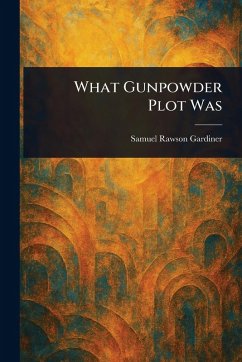Delve into one of the most infamous conspiracies in English history with Samuel Rawson Gardiner's "What Gunpowder Plot Was." This meticulously researched historical account explores the Gunpowder Plot of 1605, a failed assassination attempt against King James I. Unravel the complex web of religious conflict and political intrigue that fueled this audacious scheme. Gardiner expertly examines the key players and the motivations behind the plot, shedding light on the volatile atmosphere of 17th-century England. Discover the intricate details of the conspiracy and its ultimate unraveling, forever changing the course of English history. Explore the tensions between Catholicism and the Crown during the Renaissance as this book unpacks the Gunpowder Plot's enduring legacy as a pivotal moment in the history of Great Britain. Perfect for anyone interested in English history, religious conflict, or the anatomy of a conspiracy. This work has been selected by scholars as being culturally important, and is part of the knowledge base of civilization as we know it. This work is in the public domain in the United States of America, and possibly other nations. Within the United States, you may freely copy and distribute this work, as no entity (individual or corporate) has a copyright on the body of the work. Scholars believe, and we concur, that this work is important enough to be preserved, reproduced, and made generally available to the public. We appreciate your support of the preservation process, and thank you for being an important part of keeping this knowledge alive and relevant.
Bitte wählen Sie Ihr Anliegen aus.
Rechnungen
Retourenschein anfordern
Bestellstatus
Storno









